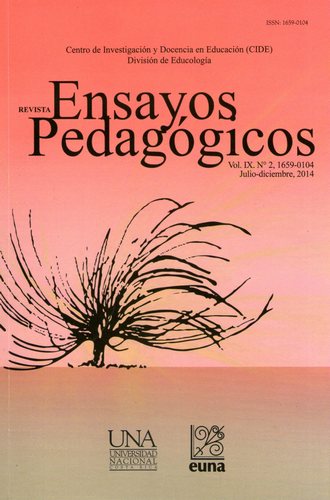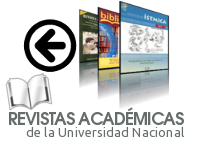Teacher Discomfort/Well-Beings: A Case of Three Bilingual Intercultural Schools of Arantepacua and Capacuaro Michoacán, México
DOI:
https://doi.org/10.15359/rep.9-2.6Keywords:
discomfort, teacher welfare, indigenous education, multiculturalismAbstract
With the purpose of knowing the relationship between the teachers´ well-being and discontentment as an opposing pairing and the association to personal, institutional and social factors from an indigenous-intercultural perspective, a study was conducted in three bilingual intercultural primary education centers: two from Arantepacua and one from Capacuaro; both are P’urhépechas peoples from the Michoacán State. This was a qualitative phenomenological study using in-depth interviewing research and one survey. Among the results of this study, the prevalence of discontentment mainly in social factors, such as migration, discipline, changes in education policies and teacher training stand out. Another factor that demonstrates discontentment was the institutional one in relation to the teachers´ excessive workload. On the other hand, well-being was identified in individual factors because they are self-sufficient.
References
Alcalá, J. (1540/2008). Relación de Michoacán. Disponible en: http://bibliotecadigital.ilce.edu.mx/sites/fondo2000/vol1/relacion/html/indice.html
Álvarez-Gayou, J.L. (2013). Cómo hacer investigación cualitativa. Fundamentos y metodología. México, DF: Paidós.
Assman, H. (2002). Placer y ternura en Educación. Hacia una sociedad aprendiente. Madrid, España: Nárcea Ediciones.
Bandura, A. (2001). Guía para la construcción de escalas de autoeficacia. Recuperado de, http://www.uky.edu/~eushe2/Pajares/effguideSpanish.html
Bermejo, L. y Prieto, M. (2005). Creencias irracionales en profesores y su relación con el malestar docente. Recuperado de http://dialnet.unirioja.es/servlet/articulo?codigo=1147371
Bermejo, L. y Prieto, M. (Septiembre-diciembre, 2005). Malestar docente y creencias de autoeficacia del profesor. Revista Española de pedagogía. 232, 493-510. Recuperado de http://revistadepedagogia.org/2007060263/vol.-lxiii-2005/n%C2%BA-232-septiembre-diciembre-2005/malestar-docente-y-creencias-de-autoeficacia-del-profesor.html
Bisquerra, R. (2008). Educación para la ciudadanía y convivencia. Madrid: Wolters Kluwer.
Cornejo,R. y Quiñonez,M. (Diciembre, 2007).Factores asociados al malestar/bienestar docente. Una investigación actual. Revista Electrónica Iberoamericana sobre Calidad, Eficacia y Cambio en Educación. (5), 5e, 75-80.
Esteve, J. (2011). El malestar docente. (6ª impresión). Barcelona, España: Papeles de Pedagogías, Paidós.
Feixas, M. (2004). La influencia de factores, personales, institucionales y contextuales en la trayectoria y el desarrollo docente de los profesores universitarios. Educar (33), 31-35.
Fernández, M. (octubre, 2008). Bournout, autoeficacia y estrés en maestros peruanos: tres estudios fácticos. Ponencia presentada en el 2º. Foro de las Américas en Investigación sobre factores psicosociales de estrés y salud mental en el trabajo. Lima, Perú.
Fueguel, C. y Montoliu, R. (2005). El malestar docente, propuestas creativas para reducir el estrés del profesorado. Barcelona, España: Octaedro.
García, S. (enero-marzo,2004.) De la educación indígena a la educación bilingüe intercultural. La comunidad p’urhépecha, Michoacán, México. Revista Mexicana de investigación educativa, 20 (9), 61-81. Recuperado de http://www.redalyc.org/articulo.oa?id=14002005
Instituto Nacional de Geografía y Estadística. (2009). Perfil sociodemográfico de la población que habla lengua indígena. Recuperado de http://www.inegi.org.mx/prod_serv/contenidos/espanol/bvinegi/productos/censos/poblacion/poblacion_indigena/leng_indi/PHLI.pdf
Lambert, C. (2006). Edmund Husserl: La idea de la fenomenología. Teología y vida , 517-529.
León, G. (enero- junio,2011). Los profesionales de secundaria, como factores de riesgo en el síndrome de Burnout. Revista electrónica Educare, 15 (1), 177-191.Recuperado de http://www.revistas.una.ac.cr/index.php/EDUCARE/article/download/890/816
Manassero, M., Vazquez, A., Ferrer, V., Fórnes, J. y Fernández, C. (2003). Estrés y Bournout en la enseñanza. Palma, Universidad de las Illes Balears.
Márquez, P. (2007). ¿Tarascos o p’urhepechas? Voces sobre antiguas y nuevas discusiones en torno al gentilicio michoacano. México: El Colegio de Michoacán.
Moriana, Juan y Herruzo, Javier. (2004). Estrés y burnout en profesores. International Journal of Clinical and HealthPsychology, 4(3), 597-621.
Morse, J. (2006). Asuntos críticos en los métodos de investigación cualitativa. Antioquía: Universidad de Antioquia.
Napione, M.E. (2008). ¿Cuándo se quema el profesorado de secundaria? España: Díaz de Santos.
Tonon, G. (2003). Calidad de vida y desgaste profesional: una mirada del síndrome de Burnout. Buenos Aires: Espacio.
Travers, A. y Cooper, C. (1997). El estrés de los profesores. La presión en la actividad docente. Barcelona: Paidós.
Vargas-Garduño, M. L. (2013). La educación intercultural bilingüe y la vivencia de la interculturalidad en familias p’urhepecha. El caso de Arantepacua, Municipio de Nahuatzen, Michoacán, México: Secretaría de Educación Pública/Coordinación General de Educación Intercultural y Bilingüe.
Downloads
Published
How to Cite
Issue
Section
License
Ensayos Pedagógicos is subscribed to the Attribution-NonCommertial-NoDerivatives 4.0 International Creative Commons Licence, which allows both authors and readers to freely download, store, copy, and distribute the final approved publisehd version of the manuscript (post-print) as long as this is done without commercial purposes, no derivative works are generated, and the source and author are mentioned. As well, Ensayos Pedagógicos declares that authors will remain the rightful owners of the copyrights of their work in perpetuity.







